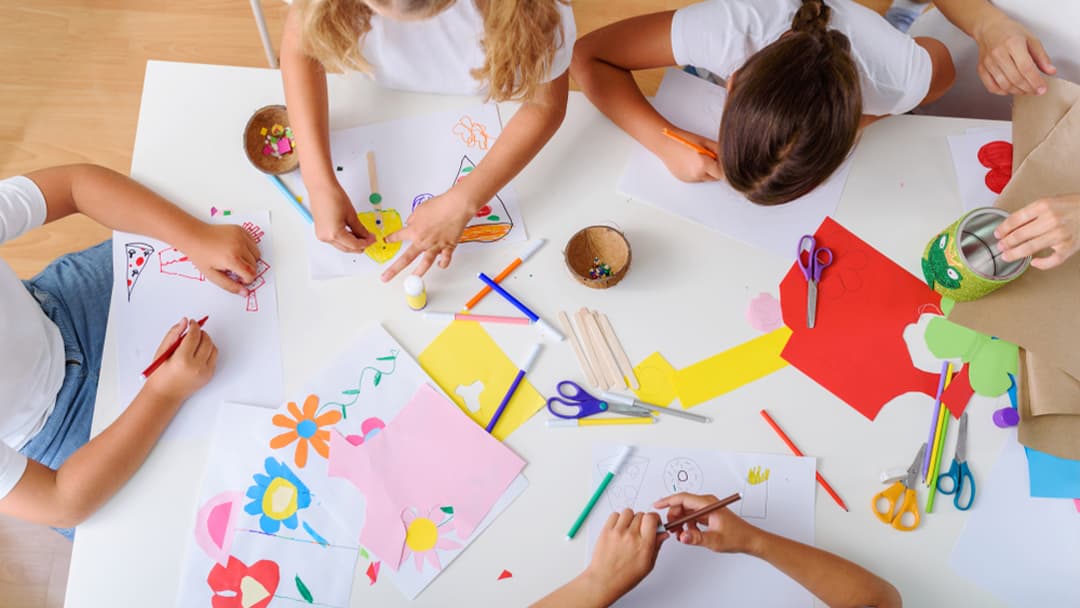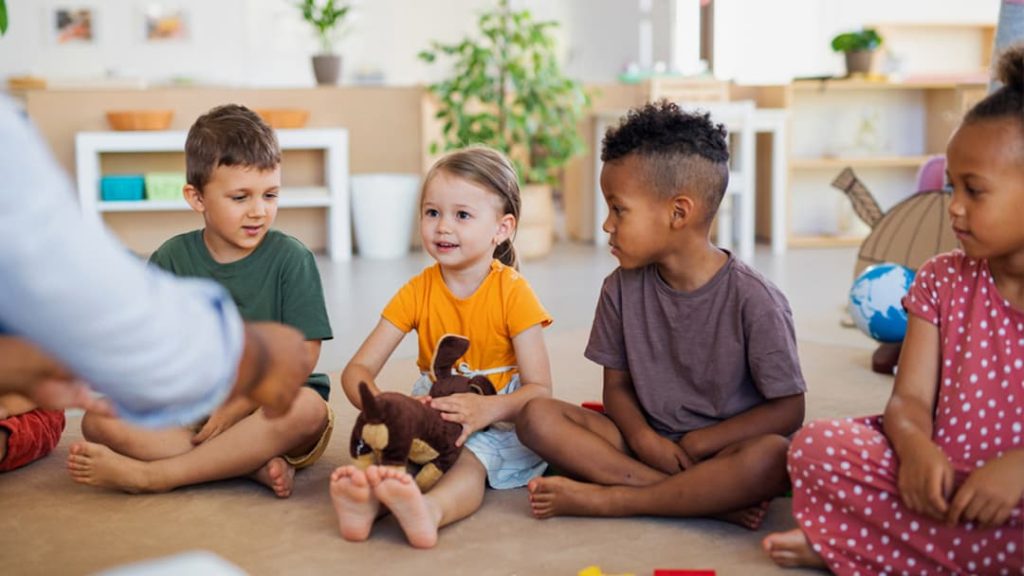
20 Tips for Building Creativity and Imagination in Children
Creativity and innovation are essential skills that children need to develop to succeed in today’s rapidly changing world. As parents and educators, we must encourage and nurture these skills in our little ones from an early age. This blog post will explore the importance of building creativity and imagination in children and a list of creative development activities for toddlers.
Creativity refers to generating new and original ideas, solutions, and products. Imagination, however, is the ability to form mental images or scenarios that are not necessarily based on reality. They both are interconnected and crucial for problem-solving, critical thinking, cognitive, and fine motor skills development.
Importance of Fostering Creativity and Innovation in Children
Today’s society often focuses on academic achievements and forgets the importance of creativity and innovation. However, these are essential for children to develop into well-rounded individuals who can thrive. Before diving into practical tips, it’s vital to understand the different types of innovation necessary in children. Here are a few:
- Problem-solving Skills: Creativity and imagination help children develop problem-solving skills. By encouraging them to think outside the box, they will learn to approach challenges from different angles and develop unique solutions.
- Critical Thinking: Critical thinking is a valuable skill that children can develop through creative play and imaginative activities. It enables them to analyse information, make informed decisions, and evaluate outcomes.
- Cognitive Development: Creativity and imagination play a significant role in cognitive development. They help children develop their memory, attention span, and ability to process information.
- Personal Development: Building creativity and imagination in children can help them develop their personality and self-confidence. It allows them to express themselves and communicate their ideas more effectively.
- Preparation for the Future: The world is changing rapidly, and we can’t predict the future. Encouraging creativity and imagination prepares children for a future that requires adaptability, innovation, and out-of-the-box thinking.
- Social Innovation: Aims to create new strategies, concepts, and ideas that meet social needs, improve the well-being of individuals, and create new social relationships or collaborations.
- Creative Thinking: The ability to generate new and original ideas through an imaginative and intuitive process that produces unexpected solutions.
20 Tips to Build Creativity and Imagination in Children

Now that we’ve discussed the importance of creativity and imagination, let’s look at some practical tips for building kids’ creative activities at home and nursery:
- Encourage Free Play: Free play is an excellent way to encourage creativity and imagination in children. It allows them to explore their surroundings, use their senses, and develop their ideas.
- Provide Creative Materials: Offer children materials that inspire creativity, such as paints, crayons, building blocks, and costumes. These materials encourage them to express their ideas and bring their imagination to life.
- Ask Open-ended Questions: Encourage children to think creatively by asking open-ended questions that stimulate their imagination. For example, “What do you think would happen if cars could fly?” or “How do you think animals communicate with each other?”
- Read and Tell Stories: Reading and telling tales is an excellent way to stimulate children’s imagination. It exposes them to new ideas, worlds, and characters, inspiring them to create stories.
- Engage in Role-playing: Role-playing is a great way to develop children’s social skills and encourage creativity. It allows them to take on different roles, experiment with various personalities, and build communication skills.
- Get Messy: Don’t be afraid to get messy, and encourage children to do the same. Messy play allows them to experiment with different materials, textures, and colours, which can help develop their creativity and imagination.
- Encourage Exploration: Encourage children to explore their surroundings outdoors or indoors. Exploration allows them to discover new things, ask questions, and develop curiosity.
- Teach Brainstorming Techniques: Teach children brainstorming techniques, such as mind mapping, to help them generate new ideas and develop their creative thinking.
- Provide Opportunities for Creative Expression: Provide children with opportunities to express their creativity through various art forms, such as drawing, painting, music, or dance.
- Embrace Mistakes: Embrace mistakes and view them as opportunities for learning and growth. Encourage children to take risks and consider failures as stepping stones to success.
- Foster Collaboration: Foster collaboration among children to encourage sharing ideas, working together, and building on each other’s thoughts.
- Use Real-World Examples: Use real-world examples to inspire creativity and imagination in children. For example, you can show them how a bridge was built or a new product was invented.
- Story Writing for Kids: Encourage children to tell stories verbally, through visuals or through writing to develop their imagination and creative thinking.
- Play Games: Play games that encourage creativity and imagination, such as “What’s Missing?” or “Pirate’s Treasure Hunt.”
- Create a Creativity Corner: Create a dedicated space for creativity and imagination, such as a “Creativity Corner” in your home or classroom, where children can express themselves freely.
- Get Inspiration from Nature: Nature is a great source of inspiration for creativity and imagination. Take children on walks, hikes, or trips to the beach to encourage them to observe and appreciate the natural world.
- Teach Design Thinking: Teach children to design thinking, a problem-solving approach that encourages empathy, ideation, prototyping, and testing. This approach can help children develop their creative thinking and problem-solving skills.
- Provide Feedback, Not Criticism: Provide feedback, not criticism, to children’s creative work. Encourage them to try new things and view mistakes as opportunities for growth.
- Celebrate Creativity: Celebrate children’s creativity and imagination by showcasing their work, whether it’s through an art show, a play, or a science fair. This can help build their confidence and motivation to continue exploring their creativity.
- Encourage Improvisation: Encourage children to think independently and creatively solve unexpected problems. This skill can help them develop their critical thinking and creativity.
Tappy Toes Nursery: A Place for Creative Learning
Tappy Toes Nursery is an excellent choice if you’re looking for a nursery that fosters creativity and imagination. We offer a unique and engaging curriculum on creative learning and child-led play. The nursery’s curriculum encourages children to explore their creativity and imagination through art, music, and role-playing. These activities help children develop confidence and self-expression while fostering creativity and imagination. The teachers at Tappy Toes Nursery are trained to promote child curiosity and creativity, allowing them to express themselves and develop their ideas.
Conclusion
Building creativity and imagination in children is essential for their cognitive, social, and emotional development. We can help them develop problem-solving skills, critical thinking, and self-expression by allowing them to explore their creativity. Tappy Toes Nursery is an excellent choice for parents who want their children to develop their creativity and imagination in a nurturing and engaging environment.


[…] learning process. Our approach to education goes beyond traditional methods. We embrace modern and creative teaching techniques that cater to each child’s unique needs and interests. By tailoring our teaching to […]